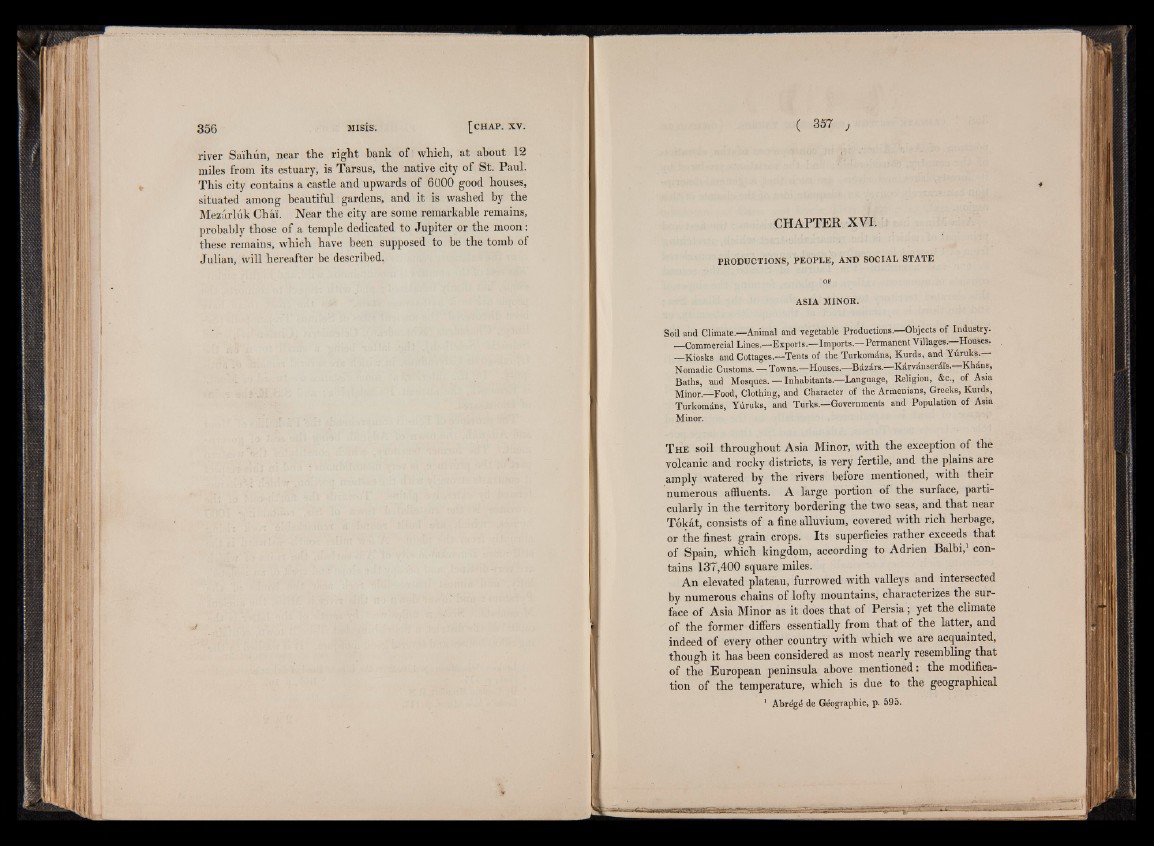
river Sa'ihun, near the right bank of which, at about 12
miles from its estuary, is Tarsus, the native city of St. Paul.
This city contains a castle and upwards of 6000 good houses,
situated among beautiful gardens, and it is washed by the
Mezirluk Chai. Near the city are some remarkable remains,
probably those of a temple dedicated to Jupiter or the moon:
these remains, which have been supposed to be the tomb of
Julian, will hereafter be described.
CHAPTER XVI.
PRODUCTIONS, PEOPLE, AND SOCIAL STATE
O F
ASIA MINOR.
Soil and Climate.—Animal and vegetable Productions.—Objects of Industry.
—Commercial Lines.— Exports.—Imports.—Permanent Villages.—Houses.
|<;__Kiosks and Cottages.—Tents of the Turkomdns, Kurds, and Yiiruks.
Nomadic Customs. — Towns.—Houses—B d z d r s . — Kdrvdnserdis.—Khdns,
Baths, and M o s q u e s . — Inhabitants.—Language, Religion, &c., of Asia
Minor.—Food, Clothing, and Character of the Armenians, Greeks, Kurds,
Turkomdns, Yiiruks, and Turks—Governments and Population of Asia
Minor.
T h e soil throughout Asia Minor, with the exception of the
volcanic and rocky districts, is very fertile, and the plains are
amply watered by the rivers before mentioned, with their
numerous affluents. A large portion of the surface, particularly
in the territory bordering the two seas, and that near
Tokat, consists of a fine alluvium, covered with rich herbage,
or the finest grain crops. Its superficies rather exceeds that
of Spain, which kingdom, according to Adrien Balbi,1 contains
137,400 square miles.
An elevated plateau, furrowed with valleys and intersected
by numerous chains of lofty mountains, characterizes the surface
of Asia Minor as it does that of Persia; yet the climate
of the former differs essentially from that of the latter, and
indeed of every other country with which we are acquainted,
though it has been considered as most nearly resembling that
of the European peninsula above mentioned: the modification
of the temperature, which is due to the geographical
1 Abrdgd de Geographie, p. 595.